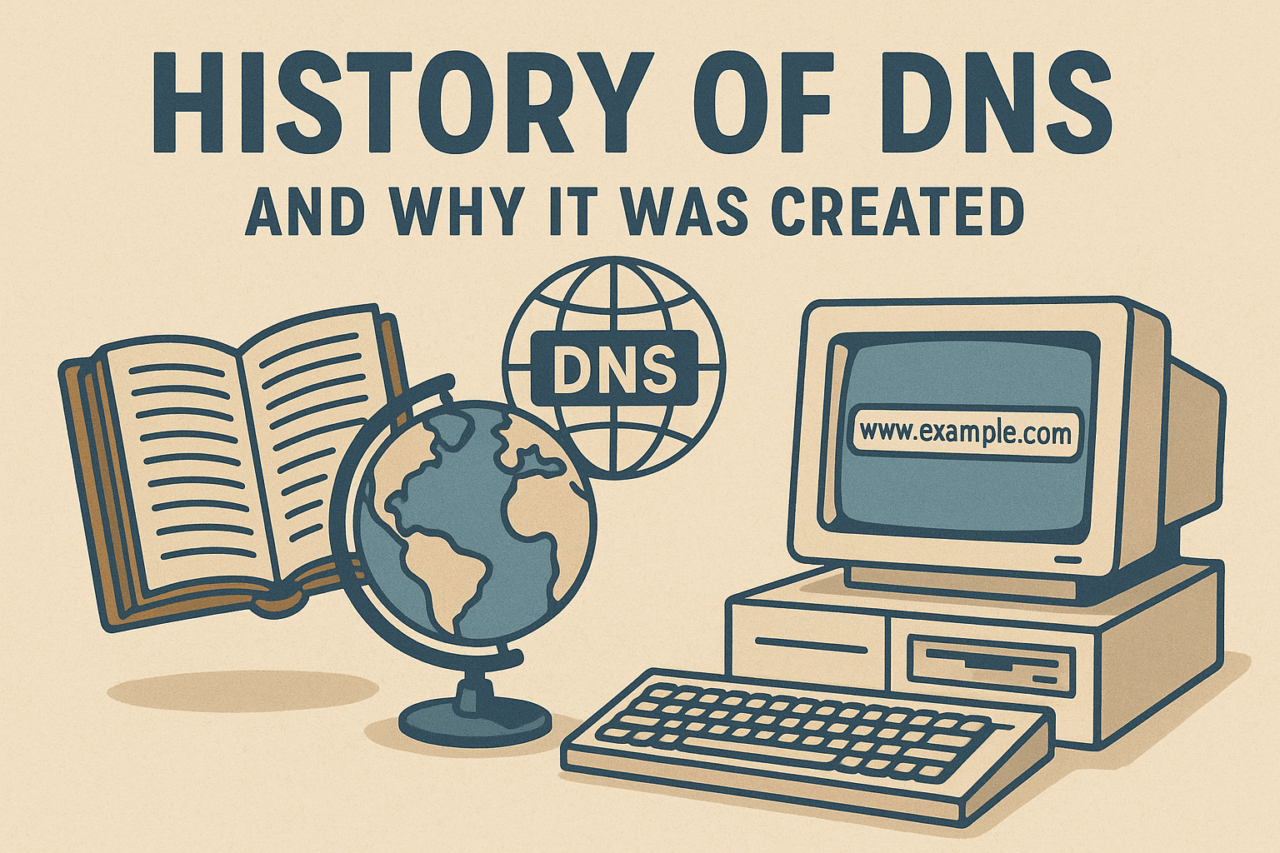The History of DNS and Why It Was Created: A Journey Through Time
In the vast digital steppe that we traverse today, where each click and keystroke can transport us to the farthest corners of the internet, there lies an unsung hero: the Domain Name System (DNS). Much like the nomadic tribes of Mongolia who navigate the wide expanse of the Gobi Desert with nothing but the stars as their guide, DNS serves as the guiding star of the internet, directing our queries to their rightful destinations. But how did this indispensable system come to be? Let us embark on a journey through the history of DNS, a tale rich with innovation and necessity.
The Genesis of DNS: A Tale of Necessity
In the early 1980s, the internet was a small, exclusive club where computers communicated using a host file called HOSTS.TXT. This humble file, akin to a well-worn map passed among travelers, contained a list of all the computer hostnames and their corresponding IP addresses. However, like a map that gets smudged and torn with use, this system quickly became unsustainable as the internet grew.
Imagine a bustling Mongolian market, where merchants shout out their names and wares. This chaotic scene mirrors the early internet, where the host file became overwhelmed by the increasing number of computers and their ever-changing addresses. It was clear that a more scalable, dynamic solution was needed.
Birth of the DNS: Enter the Visionaries
In 1983, the internet’s visionary chieftains, Paul Mockapetris and Jon Postel, introduced a revolutionary concept: the Domain Name System. This innovation was like introducing a sophisticated network of trade routes across the Mongolian plains, where each merchant could be found through a unique and memorable name rather than a set of ever-changing coordinates.
The DNS was designed to be a decentralized and hierarchical naming system, which could grow alongside the internet. Just as the vast Mongolian plateau is divided into aimags (provinces), the DNS divided the internet into domains, each with its own unique identifier. This structure allowed for efficient navigation and expansion, a necessity for the burgeoning digital landscape.
How DNS Works: A Step-by-Step Guide
To understand the DNS, one must first grasp how it operates. Much like a well-rehearsed dance, the process of DNS resolution unfolds in a series of coordinated steps:
-
Query Initiation: When you enter a web address, such as
www.example.com, into your browser, a DNS query is initiated. This is akin to a traveler seeking directions from a local guide. -
Recursive Resolver: The query first reaches a recursive resolver, which acts like a knowledgeable elder, well-versed in the landscape, who knows where to seek answers.
-
Root Name Server: The resolver forwards the query to a root name server, the wise oracle at the top of the DNS hierarchy, which directs the query to the appropriate top-level domain (TLD) server.
-
TLD Name Server: The TLD server, representative of a specific domain such as
.com, further refines the search, guiding the query closer to its destination. -
Authoritative Name Server: Finally, the query arrives at an authoritative name server, the custodian of the specific domain, which provides the correct IP address for the requested hostname.
-
Response to Client: The IP address is returned to the recursive resolver, which then forwards it to the user’s browser, completing the journey.
Here is a simple code snippet that illustrates a DNS query using Python’s socket library:
import socket
def get_ip_address(domain_name):
try:
ip_address = socket.gethostbyname(domain_name)
return ip_address
except socket.error as err:
return f"Error: {err}"
domain = "example.com"
print(f"The IP address of {domain} is: {get_ip_address(domain)}")
The Evolution and Impact of DNS
The introduction of DNS was a pivotal moment, akin to the invention of the traditional Mongolian ger, providing a reliable, portable shelter in the vast expanse of the steppe. DNS transformed the way we navigate the internet, enabling the explosive growth of online services and commerce.
Over the years, DNS has evolved to incorporate security features like DNSSEC, ensuring the integrity and authenticity of DNS data, much like the trusted seals used by Mongolian traders to verify their goods.
Conclusion: DNS as the Eternal Guiding Star
In conclusion, the history of DNS is a testament to human ingenuity and the relentless pursuit of solutions. Like the celestial bodies that guide nomads across the endless Mongolian plains, DNS remains a steadfast guide in the digital realm. As we continue to explore the ever-expanding universe of the internet, we owe a nod of gratitude to the pioneers who illuminated our path with the creation of the Domain Name System.
May we all navigate the internet’s vast steppe with the wisdom of the ages and the curiosity of a young traveler, ever eager to discover what lies beyond the horizon.

Comments (0)
There are no comments here yet, you can be the first!